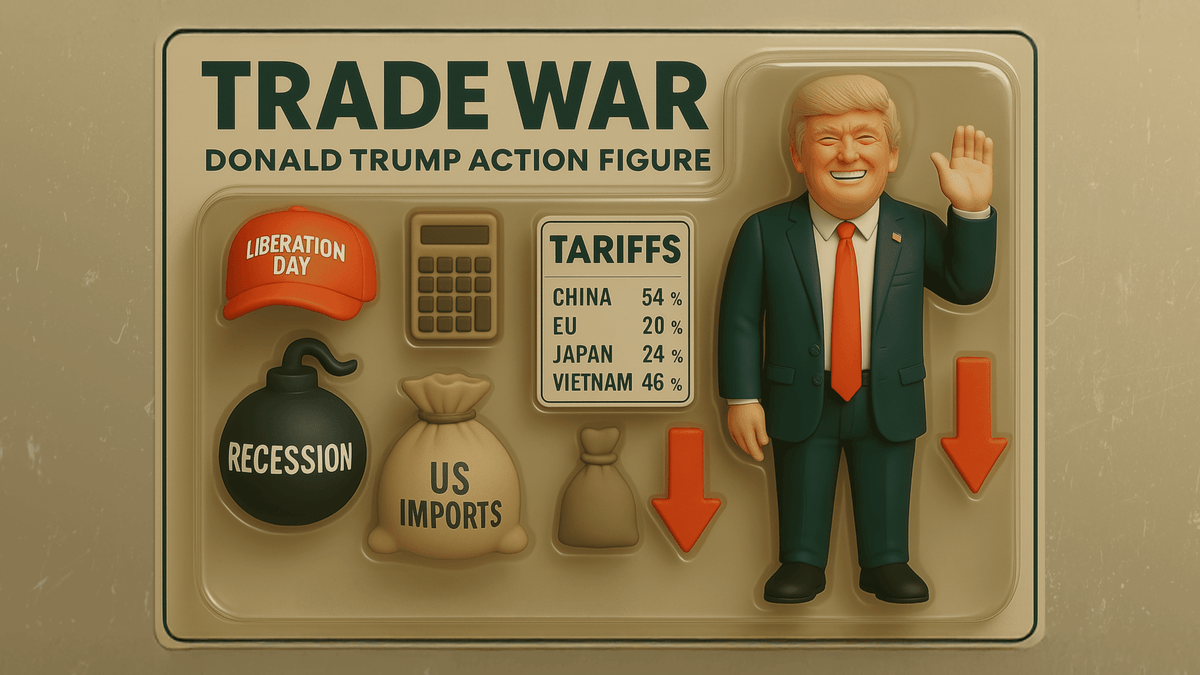
Piyasalar Karşı Gerçeklik

Güney Amerika ve Hindistan'da pandemi hızla ilerlerken, birkaç Avrupa ülkesi ikinci bir dalga için hazırlık yapıyor. ABD'de başlayan sosyal kargaşa diğer ülkelere yayılarak ayaklanmalara ve protestolara yol açtı. V şeklinde bir ekonomik toparlanma perspektifi uzak bir hayal haline geliyor ve uzun süreli bir düşüş gerçekliğe daha yakın görünüyor.
Geçtiğimiz hafta 1,5 milyon Amerikalı yeni işsizlik başvurusunda bulundu, bu da yeniden açılmaya rağmen istihdam rakamlarını beklentilerin altında bıraktı. Ancak hisse senedi piyasası duyarsız kaldı ve temel unsurlara karşı daha az tepki göstermeye devam etti. Yine de S&P 500 yılın başından bu yana sadece %3,3 kaybetti, NASDAQ ise %11 kazanarak tarihi zirvesine ulaştı.
Finansal piyasalar anestezi altında mı? Gerçeklikten kopuklar mı? Listelenen şirketlerin gerçek temel değeri nedir?
Klasik finans teorisi öğretilerini izleyen sıradan yatırımcı, piyasaların aşırı değerlendirildiğini, ekonomik gerçekliği yansıtmadığını söylemeye meyilli olurdu. Ancak Fama'nın zamanından beri işler değişti. Finansal piyasalar ve gerçek ekonomi daha dengeli ve karşılıklı bir ilişkiye sahip. Aslında, hisse senedi piyasaları şirketlerin "gerçek" değerini mümkün olduğunca doğru bir şekilde yansıtmalıdır. Aynı zamanda, bir şirketin iş durumunu yatırımcıların onun hakkında ne düşündüğü yansıtıyor. Piyasalar sadece yatırımcıların gözünden görülen gerçekliğin basit bir yansıması değil. Aynı zamanda sürücülerinden biridir.
Aşırı değerlendirilmiş hisseler varlıkların adil değerini şişiriyor. Dolayısıyla, kaldıraçlı şirketlerin yakın zamanda iflas bölgesine girme olasılığı daha düşük. Ani bir ekonomik yavaşlama sırasında, finansal piyasalarda güçlü bir fiyat sinyali, 2008'de yaşananlara benzer bir "kredi krizi"nden kaçınmayı amaçlıyor.
Para değerleri gerçek dünyadaki durumu basitçe yansıtmaz; değerleme, olayların seyrini etkileyen olumlu bir eylemdir. Para ve gerçek olgular karşılıklı bir şekilde bağlantılıdır; yani birbirlerini karşılıklı olarak etkilerler. Karşılıklı ilişki, kredi kullanımında ve kötüye kullanımında en açık şekilde kendini gösterir.
George Soros, Macar-Amerikalı milyarder yatırımcı ve hayırsever
Piyasa genel görünümü
.png)
Hisse senedi piyasasında sezgisel olmayan davranışlar var. Bazı gelişmekte olan piyasaları analiz ederken, işler daha bulanık sularda ilerliyor. Şanghay ve Hong Kong endeksleri dahil olmak üzere önde gelen Çin endeksleri, Dow Jones'tan bile daha iyi renkler gösteriyor. En rahatsız edici sonuç, ABD yönetiminin uyguladığı kısıtlamalara rağmen pozitif bölgede kalan Hong Kong hisselerinde gözlemleniyor. Görünüşe göre, piyasalar arasındaki rekabet artık fiyatları değil, hükümetlerin egosunu ilgilendiriyor. Önde gelen ülkeler, piyasaları likidite enjeksiyonu yoluyla desteklemekten, kimin daha fazla pompaladığını birbirlerine göstermeye kadar bir kalıbın içinden geçiyor. Mevcut para politikası, hisse senedi piyasası için bir steroid tedavisinden başka bir şey değil. Steroid döngüsü sona erdiğinde kazançlar kalacak mı?
Odak:
Volatilite geri dönüyor

Volatilite yüksek olduğunda, piyasalar düşüktür. Bu, yatırımcılar arasında yaygın bir inançtır ve şu anda tamamen geçerli görünmüyor.
Bir sessizlik döneminden sonra, volatilite endeksi geçtiğimiz hafta geri döndü. Hisse senedi piyasası, daha az iyimser bir yeniden açılışın ortasında istikrarlı kaldı. Mevcut durumun istikrarsızlığını vurgulayan tek gösterge budur. Ayrıca Haziran ayı sonuna doğru yeni bir piyasa düşüşü için faktörlerin biriktiğini de işaret edebilir. Yüksek volatilite rejimleri, istikrarsız bir arz/talep dengesinin sonucudur ve bu da piyasada yapısal bir bozulmaya neden olur. Hisse senedi piyasası ince bir buzun üzerinde yürüyor ve her an kırılabilir.
Kripto:
Bitcoin işkencede

Bitcoin'in fiyatı, 10.000 USD direnç seviyesinin hemen altında, istikrarlı ancak tehlikeli bir bölgede sıkıştı. Mayıs ayındaki yarılanmadan sonra madencilik zorluğu önemli ölçüde düştü ve madencilik maliyeti de düştü. Şu anda Bitcoin madenciliği 8.000 ile 9.000 USD arasında bir maliyete sahip, bu da matematiksel olarak karlı hale getiriyor. Ancak, çoğu madenci mevcut fiyatlarla mücadele ediyor ve üç aylık ralliye rağmen piyasa hala tereddütlü. Ek likidite akışı sağlamak için fiyat sinyali daha sağlam olmalıdır.
Çoğu merkez bankası, koronavirüs krizi sırasında para basma karuseline girdi. Bu nedenle, daha fazla yatırımcı Bitcoin'e bakıyor ve 2017'den gelen senaryoları tahmin ediyor. Gerçek tehdit, bir piyasa düşüşünün Bitcoin sistemini engellemesi, madenciliği karlı hale getirememesidir. Bitcoin, alternatif bir para birimi olarak sürdürülebilir kalmak için hızla ikinci bir rüzgar bulması gerekiyor.
Emtialar:
Petrol kaynıyor

Petrol tüccarları, önümüzdeki aylarda talebin sürdürülebilir bir şekilde toparlanacağına güveniyormuş gibi görünüyor. Brent ham petrolü 40 USD'de destek buldu ve olumlu bir görünüm sergiliyor. Bu, ham petrol vadeli işlemlerinin finansal piyasalar tarihinde bir ilke olan negatif fiyatlarda işlem gördüğü tarihten sadece iki ay sonra gerçekleşiyor.
Önde gelen petrol şirketleri hayatta kalmak için mücadele ediyor, birçoğu iflasla karşı karşıya. COVID enfeksiyonlarının ikinci bir dalgasının belirtileri arasında, daha az gelecekteki arz, piyasanın iyimser olmasının nedenlerinden biri olabilir. Yine de, ikinci bir kapanma, talep ve petrol endüstrisi için ölümcül olabilir.
Piyasa görünümü
Tahmin edildiği gibi, Brent ham petrolü ve Altın pozitif bölgede kaldı. NASDAQ 10.000 USD ile tekrar flört etti ancak 9.900'e doğru geri döndü. Ekonomi açılışı tahmin edilenden daha yavaş olduğu için Dow Jones daha fazla düzeltmeler görebilir. Brent ham petrolü ve Bitcoin önümüzdeki hafta kuzeye doğru hareket etmelidir.





Genel Sorumluluk Reddi
Bu içerik yalnızca bilgilendirme amaçlıdır ve mali tavsiye veya alım-satım tavsiyesi niteliğinde değildir. Yatırımlar, sermaye kaybı riski de dahil olmak üzere risk taşır. Geçmiş performans, gelecekteki sonuçların göstergesi değildir. Yatırım kararları almadan önce mali hedeflerinizi göz önünde bulundurun veya nitelikli bir finansal danışmana danışın.
Bunu bilgilendirici buldunuz mu?
Hayır
Biraz
İyi




%2FfPNTehGpuD8BdwDeEEbTF2.png&w=1200&q=100)
%2FgRTFfWwPmcWyE8PFfywB82.png&w=1200&q=100)

%2FAD2MfhoJXohkTgrZ5YjADV.png&w=1200&q=100)

%2FjjqkumDfGjhNxroL253Hc4.png&w=1200&q=100)

